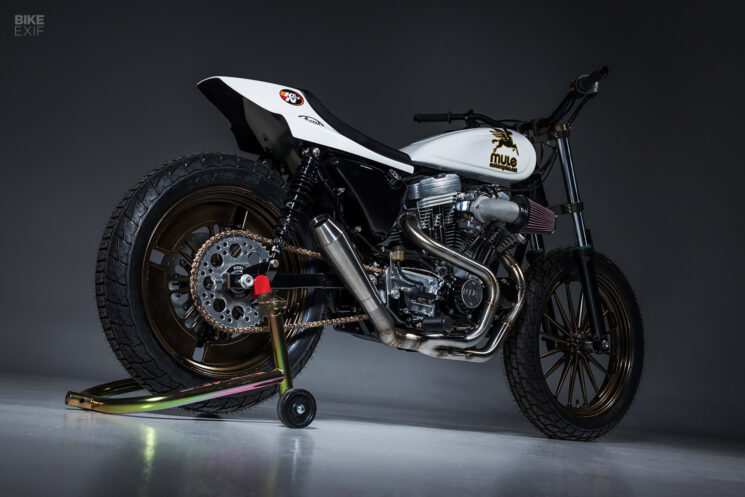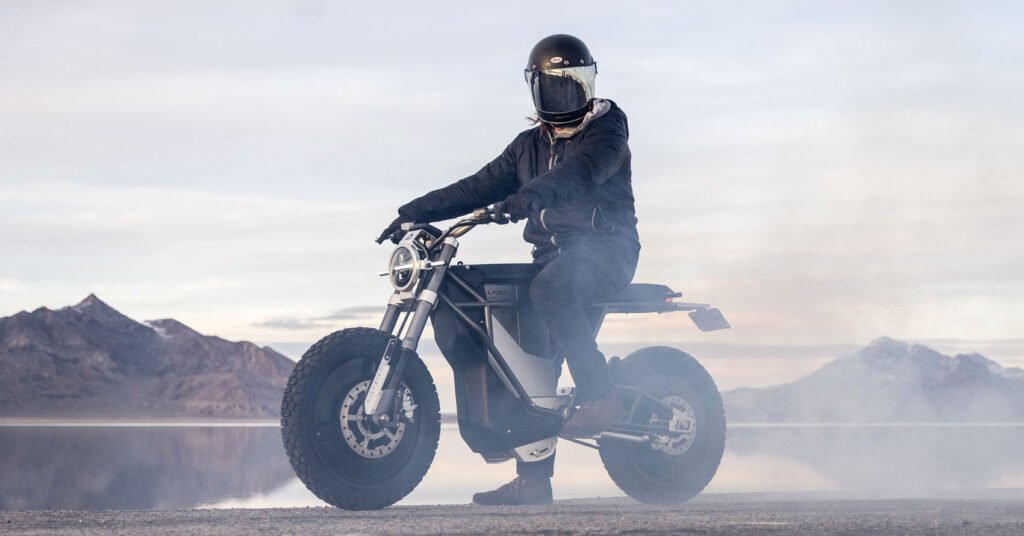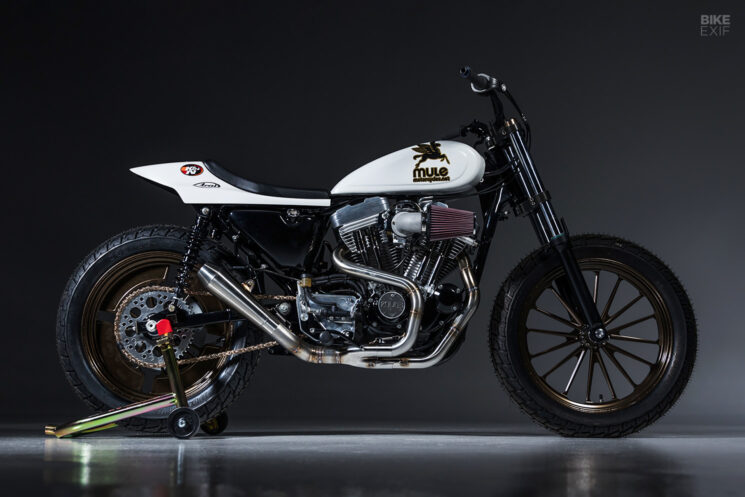
Even though the Harley-Davidson Evolution Sportster is no longer in production, it’s eons away from going extinct. There are plenty of second-hand Evo Sportsters kicking around, and no shortage of aftermarket parts for them. And as long as the Sporty is still in play, masters like Richard ‘Mule’ Pollock will be on hand to extract the maximum potential from it.
Most of the Sportsters that roll out of the Mule Motorcycles workshop are either bona fide flat track race bikes, or street trackers that look like they belong on a dirt oval. This 1997 Harley-Davidson Sportster 883 belongs in the former camp.
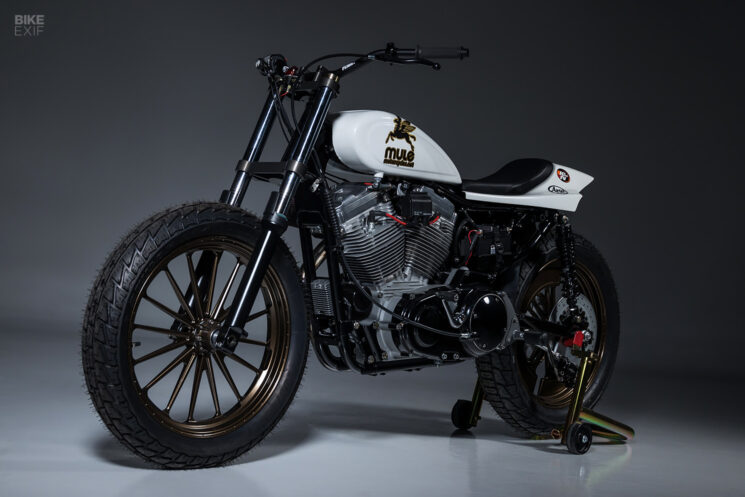
Mule’s client races in America’s Grand National Hooligan Championship, where he finished second in his region last year. Currently at its zenith, the Hooligan series makes amateur flat track racing more accessible (and fun) through a unique set of regulations.
The rules stipulate that bikes must be production models, sized 648 cc and up, with no modifications to their steering necks or swingarm pivot location. You can tweak your bike’s geometry with bolt-on parts though, and you can go buck-wild on engine mods. Luckily, Richard knows how to employ both tactics to great effect.

Mule started by deploying his usual array of ‘legal’ chassis mods. The frame was de-tabbed, and liberated of its fender stays and side stand mounts. The rear section was treated to a removable rear loop and aluminum inner fender, and the battery box was shrunk to fit a smaller Shorai battery.
Next, Mule moved the shock mounts on the swingarm forward to increase the seat height. The rear rides on fully adjustable shocks from K-Tech Suspension.

Moving to the front, Mule installed a set of Yamaha R6 forks, extending them with cap extensions from J.J. Flairty. Keen eyes will notice that the angle of the forks doesn’t quite match the angle of the Sportster’s steering neck. It’s not an optical illusion; the steering stem sits inside an offset bearing and stem kit, sharpening the head angle by three degrees for sharper handling.
Above the custom yokes, you’ll find ODI handlebars, a Motion Pro throttle, a Buell clutch lever, and a Yamaha R1 kill switch and starter button. The foot controls are Mule items with Bates rubber; the right-hand side looks particularly trick, with a custom brake pedal and master cylinder arrangement that actuates the bike’s rear (and only) brake. Also present are a Brembo master cylinder, Beringer, Mule caliper bracket, and Crown Performance brake lines.
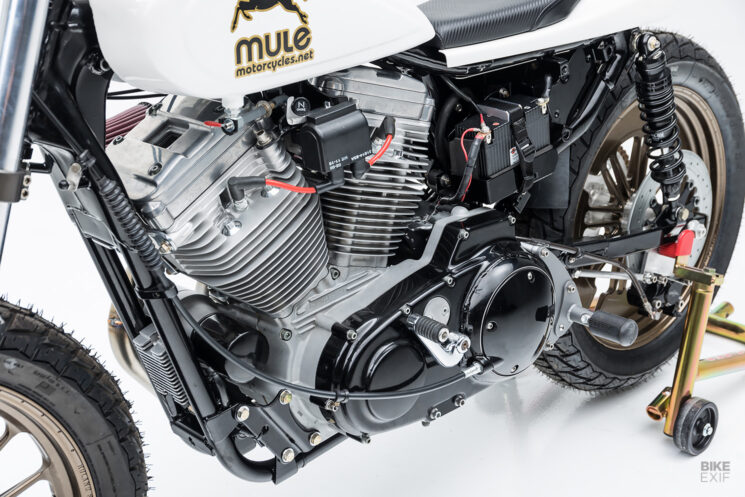
Under the hood, Mule turned this meek 883 into a fire-breathing 1,200 cc monster. American V-twin specialists Branch & O’Keefe ported the heads and supplied a pair of proprietary pistons. Also in play are Andrews cams, a Dyna ignition, and a ForceWinder intake with a K&N filter, attached to the modified OEM carb.
Mule picked this intake and filter setup to give the rider more legroom when shuffling the bike around the track. The exhaust system is a highly modified Cone Engineering setup, tweaked and twisted to keep everything tightly tucked. Mule also modified the primary cover, relocating the clutch cable exit to make it less likely to break in a crash.
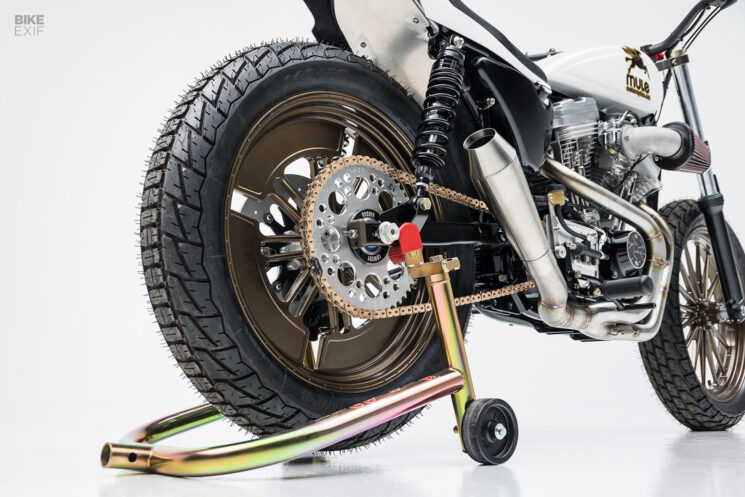
The Sportster wears traditional flat track attire from the best in the biz; an aluminum fuel tank from Storz, a fiberglass seat from First Klass Glass, and a seat pad from Saddlemen. Superbike Paint in San Diego, California executed the minimalistic white livery.
The 19” flat track hoops are from Roland Sands Design and are finished in a ‘burnt bronze’ powder coat. (The rear wheel’s solid design makes it heavier, which helps to maintain maximum traction.) The rear axle is a custom chromoly affair, cadmium-plated for corrosion resistance.
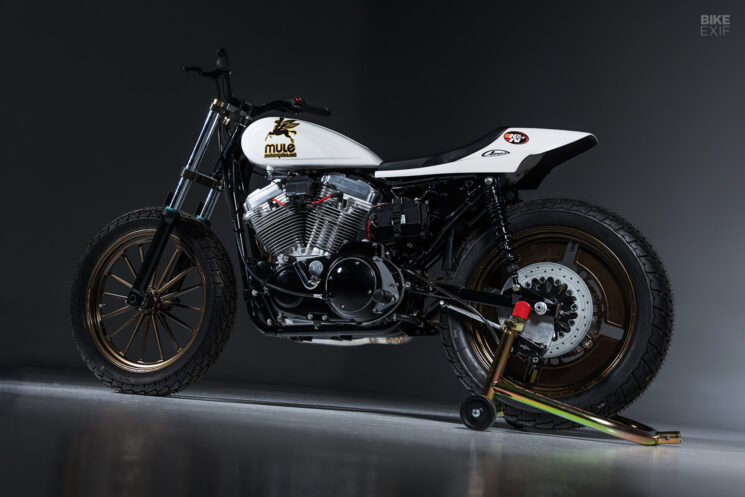
Perfectly poised and begging to be ridden in anger, Mule’s Hooligan Sportster is an emphatic reminder that the man is still at the top of his fame. Long live the Sportster!
Mule Motorcycles | Instagram | Images by Bart Cepek
Mule would like to thank the Connell family at Extreme Outlaw Karts for their machining and fabrication services.
